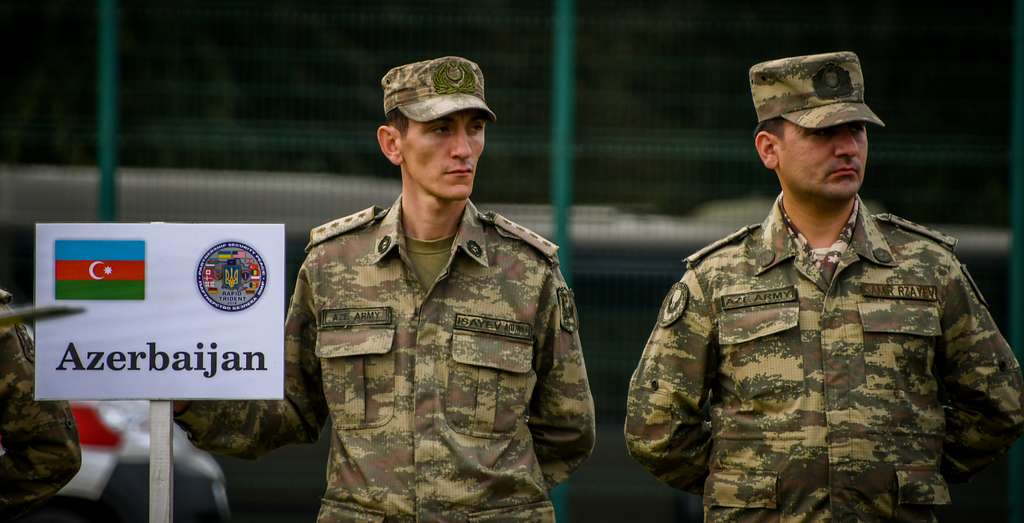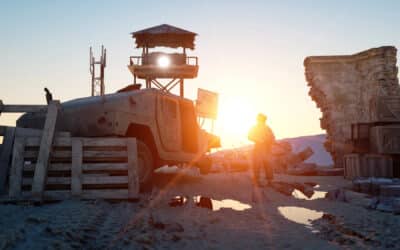Failed prophets are a dime-a-dozen. If I had a nickel for every time I had been told the world was on the brink of collapse for reasons ranging from oceanic methane deposits to credit default swaps, I might not be a billionaire, but I would drive a nicer car. How refreshing, then, to come upon a book of successful prophecy, Colonel John Antal’s 7 Seconds to Die: A Military Analysis of the Second Nagorno-Karabakh War and the Future of Warfighting.
Antal’s analysis of the Second Nagorno-Karabakh War was published on February 3, 2022, so it provides an interesting historical picture of what Western military thinkers were pondering in the months and weeks prior to the Russian invasion of Ukraine.
Nagorno-Karabakh is a region of the South Causcasus (a region which has been perpetually soaked in blood as far back as we have records) which lies on the border of Azerbaijan and Armenia; the Soviets assigned the region to Azerbaijan in the 1920s despite it being majority Armenian, and as the USSR fell apart in the 1980s, the Armenians attempted to effect their secession from Azerbaijan and a union with Armenia. The first goal was accomplished, and after a bloody, Yugoslav-style war, the Armenian Republic of Artsakh was established (with no international recognition). Although Armenia never formally annexed Artsakh, it was understood that Artsakh was Armenian. The Azeris, naturally, did not find this state of affairs to their liking, and resolved to rectify it.
Now, I must register a complaint: Colonel Antal is not a very good writer. There is no way around it. Every terrible rhetorical cliché of the national security professional is in evidence, from the unnecessary quotes from Clausewitz and Sun Tzu to the overly didactic “historical examples” cribbed from the classics as though he is writing a school textbook, all written in excruciating Pentagonese. The mere fact that, in a book whose readers are going to be almost exclusively ‘National Security Professionals,’ Antal feels the need to engage in a disquisition on “what war is,” while saying nothing that couldn’t have been cribbed from a Wikipedia article is a shameless (and very DC) attempt to prove his erudition.
Perhaps the most egregious example is when he uses the defeat of Crassus at Carrhae to illustrate the fatal effects of a military failing to adapt to a new technology (in this case the Parthian recurve bow and mounted archery). I am neither a classicist nor a military historian by trade, but there are dozens of better examples of technology changing the shape of warfare and I can only think that he chose this example to let you, the reader, know that he has heard of Carrhae and that he has read Plutarch. This is the national security striver at his most intolerable, and it actually obscures Antal’s incisive analysis.
For example, he notes that while loitering munitions and UAS systems might be able to change the face of war, it would require the suppression of enemy air defense systems and cUAS systems to work. The Azeris did this by buying a number of old Soviet biplanes and either turning them into remote-control drones or by having pilots fly them to the appropriate altitude and bail, depending on whose accounts you believe, and once the Armenian air defense network had revealed itself, the Azeris then targeted their emplacements with Israeli and Turkish unmanned systems.
The unrecognized story of the invasion of Ukraine—what explains the stagnation of the conflict into the seeming rerun of Passchendaele we are seeing—is the impotence of Russian airpower. This seems (from news reports) to have largely been achieved because the Ukrainians were sparing in their use of anti-air systems, holding them back from the frontline, disguising their radar, and in general accepting the potential threat of their air defense systems to high-value Russian targets means that their resources, military and civilian, must take occasional hits from Russian missiles. The ability to threaten high-value air assets is more important than stopping every missile, because without close air support the Russians must rely on tube and missile artillery, which despite Russian’s numerical superiority appears to be of more limited effectiveness.
Similarly, Antal suggests that the tank is not dead, but that it does require a new generation of active protection systems and sensors to prevent its destruction by both drones and long-range precision fires, another concept which I think the Ukraine conflict has empirically validated. The need for power, maneuverability, and speed is such that (per Antal) the tank may even grow more important in maneuver warfare, as anything without armor and the spare electric capacity to power EW and cUAS systems is going to be blown up by $50 autonomous Israeli suicide drones.
This was a war the Azeris had been planning to fight for two decades and they ended up fighting it essentially flawlessly. The Armenian plan for a second war in the disputed territory relied on frontline Artsakhian and Armenian troops holding well-prepared fortified lines while the rest of the Armenian army mobilized in order to turn the tide (not unlike the Israeli’s prewar plans in 1973). However, the Armenians did not detect the Azeri mobilization prior to the beginning of the conflict, and thus were not prepared to fight when the Azeri offensive began. This catastrophic intelligence failure on the part of the Armenians (which seems especially inexcusable in light of the several months of successful diplomatic maneuvering by Azerbaijan to separate Russia and Armenia) scuttled their plan on day one of the war, and they never seem to have devised a coherent Plan B.
Once the Azeris cracked the Armenian defensive lines along the crucial passes leading to Shusha, Artsakh’s second city, the Armenians seem to have been powerless to resist. While the Armenians were able to hold on in the north, this ultimately proved irrelevant, as the Azeris shattered the Armenian and Artsakhian forces in the flat and open plains of the south and in a little over a month reached firing positions overlooking the most populous areas of Artsakh. Of course at that point Russia stepped in and forced a ceasefire, preserving the nucleus of Armenian Artsakh despite the cession of about two-thirds of prewar Nagorno-Karabakh.
So what do we learn from all this? Well for me, Antal’s book helped explain the Russian operations in Ukraine far better than the popular media theory at the time, which was that our Humiliating Withdrawal from Afghanistan™ signaled that the Death of the American Empire© was at hand and the time was ripe to strike. What you see in this war is much more informative viz. what the Russkies were actually considering as they planned their operations. The Azeris destroyed Armenia’s air defenses early in the war, rolled across the flat plains of southern Artsakh once they had suppressed Armenian anti-tank capabilities (with drones and drone-directed artillery strikes), and placed themselves on commanding positions to fire for effect on major Armenian population centers, at which point the Armenians agreed to a humiliating ceasefire.
That doesn’t sound terribly different from what the Russians appear to have been trying to do with their assaults on Kiev and Kharkov early in the war. The Russians seem to have hoped that some combination of shock-and-awe and threats of missile barrages would cow the Ukrainians into submission relatively bloodlessly. (They also appear to have catastrophically misread the internal political situation in Ukraine). That this didn’t work out should be obvious, but I think the Nagorno-Karabakh conflict persuaded the Russians that it might.
Part of the problem for the Russians, I suspect, was population and distance; instead of advancing about fifty miles under good air cover through relatively depopulated country to their destination, even the Russian spearhead which began closest to Kiev had to travel almost 150 miles and pass through or around the relatively large city of Chernigov. Worse than that, from the Russian perspective, they were unable to cripple the Ukrainian air defenses early in the war, meaning that close air support was subject to interdiction and thus frequently the Russians were unable or unwilling to commit expensive air assets to force a decision in the battles around Kiev.
As the invaluable Riley Waggaman has documented, internally Russia’s military seems to have had almost no interest in the sort of small drones that proved so critical for Azerbaijan until long after the conflict had begun. In December 2021, when the lessons of this conflict must have already been well-enough digested in the West that Antal was working on this book, Russian military hardware manufacturers were claiming to have designed a new drone which Russian internet users quickly noted could be purchased on AliExpress.
It’s also notable that Armenia was (beyond the Russians, who were lukewarm) essentially friendless internationally, and being a poor country had not armed up in the same way that Azerbaijan, loaded with Turkish and Israeli weapons, very much had. This was not the situation in Ukraine. Instead of being able to stunt on a minor, poorly-armed power with no friends, Russia has found itself pulled into a proxy war, fighting a secondary power being supported by the industrial and intelligence systems of NATO. Even if they do manage to grind out a win, you would hate to think they planned this.
My suspicion, and this book reinforces it, is that the Russians and the Americans were thinking along largely the same lines when it came to the lessons of Nagorno-Karabakh, and NATO actually worked out what the Russians were doing and countered it prior to the Kremlin executing its putative master stroke.
Despite the book’s frequently abysmal prose, I think Seven Seconds to Die is a compelling testament to the acuity of NATO intelligence and war planning. From the perspective of about fifteen months into Russia’s invasion of Ukraine, it appears the Russians had no such perspicacity or foresight. Instead, they relied on breezy assurances that their troops would be greeted as liberators and that their technology and special forces would overawe their opponents. At least Paul Wolfowitz was right about one of those assumptions.































